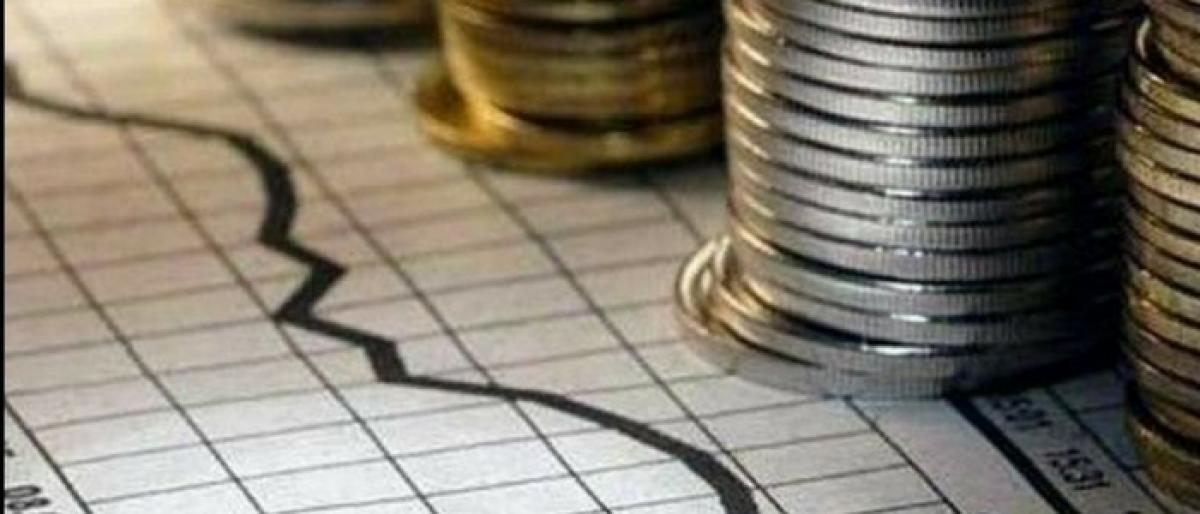States’ fiscal deficit on the rise

How much of fiscal deficit is right? Fiscal deficit is bridged by market borrowing and central bank printing fresh currency (monetization), if necessary. (To a limited extent, FD is important as the Government’s ability to help growth and welfare increases).
How much of fiscal deficit is right?
- Fiscal deficit is bridged by market borrowing and central bank printing fresh currency (monetization), if necessary. (To a limited extent, FD is important as the Government’s ability to help growth and welfare increases).
- Government can always return the loans when its revenues improve due to tax buoyancy.
- However, (FD becomes problematic and even destabilizing when it overshoots a rational threshold).
- Moderation of fiscal deficit is important. Large and persistent fiscal deficits are a cause of concern, as they pose several risks. (Fiscal deficits may cause macroeconomic instability by inflating the economy as money supply rises).
- Corporate sector is crowded out-they are left with inadequate funds in the markets as the government borrowing requirements increase.
- Added to that, interest rates will be high as there is pressure on the available money in the market. (If the funding route is through RBI monetization, it means inflation and instability).
- Inflation may mean fewer saving, less investment and eventually it hurts the sustainability of high growth.
- Large deficits, even if they do not spill over into macroeconomic instability in the short run, will require higher taxes in the long term to cover the heavy burden of internal debt.
- High tax rates will place India at a significant disadvantage to other fast-growing countries.
- It means, as the (FRBM Act says- inter generational parity is hurt if debt mounts as future generations will have to pay higher taxes to help the government repay the debt).
Government liabilities Interest payments
- Increase and there is far less for development. BOP pressures may mount if inflows drop due to the country being downgraded by rating agencies like Standard and Poor, Moody etc.
- FDs must be moderated-they are desirable within limits but hurtful beyond the limits. The above analysis applies to FD in normal times.
- But in abnormal times like since 2008-09 when the world slipped into recession impacting Indian economy negatively, FD must be allowed to be increased for the fiscal stimuli which are necessary to arrest downturn in the economy and kickstart growth.
- FRBM allows such counter-cyclical expenditure. Even then, deficit should be incurred not for populist expenditure but to stimulate the economy.
- The sovereign debt crisis in Eurozone (2010 onwards) and particularly the Greece economy are due to excessive FD.
- It borrowed and spent excessively in response to the global financial crisis. The stimulus package did not work.
- The need for massive borrowing and spending continued. But the government was not able to raise the money at normal rates of interest.
- It had to pay high rates of interest. That means it will be debt-trapped. The banks and other financial institutions that invested in Greek government bonds panicked. Their share prices fell.
- Financial system was in danger of instability. Similar crisis was seen in Ireland later and Spain and Portugal too. These countries are acronym ally called PIGS.
- The lesson from Greek crisis is that FD may be incurred only for productive reasons and ensure good returns.
Reducing FD
- FD has to be reduced and the FRBM targets are to be conformed to, under normal conditions.
- But (upto 3% of GDP for FD as laid down by FRBM Act is desirable as the Government can borrow and spend for welfare and growth).
- The extent of reduction and the manner of reduction matter. More resources should be raised from taxes, user charges, disinvestment etc.
- Expenditure control should not involve cuts on social sector expenditure as it hurts poor and demographic dividend cannot be reaped.
- The level of FD should be determined keeping in consideration the following
- Whether the debt can be put to productive deployment
- The rate of return on the borrowed funds’ use is adequate
- The impact on private sector investment by way of crowding out effect etc.
- Even more important is not to cut social spending in a move to reduce deficit.
- In other words it means that FD reduction is being needed for macroeconomic stability and inters generational parity.
- Introduction of GST, the DTC amendments, selective disinvestment, broadening of tax base, tax buoyancy etc. will yield enough to moderate borrowings.
States' fiscal deficit will rise to 3.3% in 2017-18
- A report by ratings firm India Ratings and Research (Ind-Ra) estimates that aggregate fiscal deficit of Indian states will increase marginally to 3.3% of gross domestic product (GDP) in 2017-18 from its forecast of 3.2% for 2016-17. It expects states’ debt/GDP ratio may increase marginally to 24.3% in 2017-18 from 24% forecasted for 2016-17.
- The central government is evaluating the report of the N. K. Singh panel on Fiscal Responsibility and Budget Management, which allows the fiscal deficit of the central government to be increased by 0.5% of GDP.
- Ind-Ra believes that once the report is accepted, states would also make suitable changes in the fiscal deficit targets specified under their Fiscal Responsibility and Budget Management Acts.
- Net market borrowings of states are expected to increase to Rs 3.7lakh crore in 2017-18 from its forecast of Rs 3.5lakh crore for 2017-18. However, as a percentage of GDP, states’ net market borrowings is likely to moderate to 2.2% in 2017-18 from its forecast of 2.3% for 2017-18.
- Ind-Ra expects goods and services tax to be implemented from July 2017.
- Ind-Ra believes the proposed compensation of INR500 billion by the central government to state governments to cover revenue losses post tax implementation will be sufficient.
- Ind-Ra expects demand for petroleum products in 2017-18 to increase 9.5% yoy and the prices of Indian crude basket to increase to INR4,015/bbl from INR3,122/bbl in 2016-17 (April-January).
- I nd-Ra expects states with a higher proportion of revenue from petroleum products in own tax revenue to benefit from the increase in crude oil prices.
- On the expenditure side, Ind-Ra expects the aggregate capital expenditure/GDP ratio of states to remain stable at 3.4% in 2017-18, same as in 2015-16 and 2016-17 (2014-15: 2.5%). Despite a salary revision, Ind-Ra expects select committed expenditure (in the form of salary, pension and interest payments)/current expenditure ratio to remain stable in 2017-18.
Conclusion
- UDAY Scheme is necessary because it is important to bring the whole electricity burden onto the books.
- Future monetary policy, growth and expenditure will be affected if more states waive farm loans.
- Losses from liquor ban is being covered by imposing additional taxes over and above GST like in Maharashtra and Tamil Nadu.
- But this is not the way GST is supposed to work. Whether states are spending on developmental targets they have fixed for themselves has to be seen.
- The way ahead needs each of the states have to be efficient with spending their money and reduce their liabilities.
Next Story



















